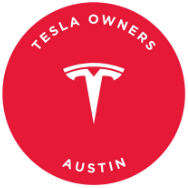Road-tripping in an electric vehicle is becoming increasingly popular in the U.S. as the network of public charging stations continues to grow. However, a recent study by Consumer Reports has highlighted the challenges that EV drivers face when it comes to reliability at these charging stations.
The study surveyed 1,230 owners of electric vehicles and plug-in hybrids and found that EV drivers reported problems nearly half the time they pulled up to Shell Recharge stations. Similarly, EVgo and Blink charging stations also fared poorly in terms of reliability, with issues related to payment systems and broken hardware being the most common.
On the other hand, Tesla Superchargers and the Rivian Adventure Network emerged as the most reliable charging stations in the U.S. According to the study, only 4% of charging sessions at Tesla Superchargers experienced issues, while Rivian had a slightly higher reliability rate at 5%.
One of the major issues reported by EV drivers at unreliable charging stations was glitchy payment systems, broken hardware, and slow charging speeds. In fact, 76% of the reported issues involved dead touchscreens or cryptic error messages, making it difficult for drivers to charge their vehicles.
The study also highlighted the importance of collaboration among charging network operators to address and fix these issues. It pointed out that charging stations with fragmented ownership or working with multiple providers need more coordination to ensure a seamless charging experience for drivers.
Tesla and Rivian stood out in terms of reliability because they design, manufacture, and operate their own charging stations. This allows them to have full control over the software and hardware components, ensuring a smoother charging process for their customers.
To address the issues faced by EV drivers at charging stations, the study recommended improved transparency from charging network operators. It suggested providing real-time station data, better methods for consumers to report problems, and tracking progress to ensure network health improves over time.
Despite the challenges, EV drivers can take steps to mitigate issues with proper planning and the use of community-based apps like PlugShare. Additionally, getting a Level 2 home charger can meet most of the charging needs, as the majority of EV charging happens at home.
In conclusion, the study called for charging companies to take ownership of their performance and implement measures to improve reliability. By addressing issues such as broken screens, payment problems, and slow charging power, charging networks can enhance the overall experience for EV drivers and build trust within the EV community.

